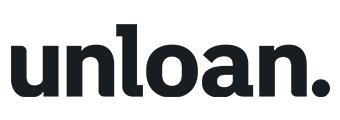All lenders have their own requirements when assessing home loan applications but there is some eligibility criteria that generally applies across the board. Knowing some of the most common home loan requirements and lender preferences can give you a head start in preparing your loan application.
1. Your personal circumstances & intent
There are many factors home loan lenders aren't legally allowed to discriminate against, but they may prefer some borrowers over others based on things like lifestyle and employment type. Here are some factors they may consider when assessing an application:
The applicant's age
You typically must be at least 18 years of age to be approved for a home loan, that's likely a given.
But at the other end of the scale, many lenders can be hesitant to lend to older borrowers, particularly those over 55. That's not necessarily discrimination, it's because lenders need to assess whether a person will be able to meet their repayments for the life of their loan.
So, if you're aged over 55 and applying for a 30 year mortgage, the lender will likely question you on your 'exit plan', e.g. how you'll meet repayments down the track. This may incorporate accessing superannuation on retirement or having enough equity in another property that could be sold if required.
Some lenders may only be willing to offer a shorter loan term to older applicants, effectively increasing the regular repayments the applicant would need to make over the life of the loan.
Residency
Lenders will want to know if you're a citizen or permanent resident of Australia. If you are not a permanent resident, you are not necessarily excluded from borrowing. Many lenders will consider individual circumstances.
For example, non-residents who are married to (or in a de facto relationship with) an Australian citizen or permanent resident will be assessed as a resident applicant by many lenders. For other circumstances, lenders may place limits on the amount that can be borrowed and some may require a larger deposit.
In some cases, applicants might even need to seek the approval of the Foreign Investment Review Board (FIRB) in order to legally purchase a property in Australia.
Whether you're buying as an individual
Lenders will consider whether you're borrowing as an individual, a company, or a trustee of a trust.
Many lenders generally allow companies and trustees to borrow but they likely have different lending criteria in place, requiring specific documentation. Bear in mind too that not all companies or groups are eligible for home loans.
Clubs, associations, and limited liability companies (LLCs) cannot have a home loan eligibility. Meanwhile, many lenders don't offer mortgages to those purchasing property through a trust due to the compliance work involved.
2. Your employment status
All lenders will closely examine your employment situation to determine if you have a stable source of income. The way your income is assessed will depend on your type of employment.
PAYG employee
If you are a PAYG employee – in other words, you receive a pay slip with tax withheld – you should have a relatively easy time proving your income. But there are a few other factors lenders will examine:
- Type of employment: Are you a full-time, part-time, or casual worker? If you are a casual or seasonal employee, you may face a few more hurdles in being approved for a home loan. That said, some lenders may be willing to consider this type of employment on a case-by-case basis.
- Length of employment: Lenders generally prefer applicants who are employed in the same job for 12 months or in the same industry for two years.
Self-employed
While it's sometimes more difficult for self-employed or sole trader borrowers to provide income documentation, there are lenders that specialise in providing loans to such applicants. In some cases, you may have to apply for a special type of home loan known as a low documentation (low doc) home loan. Without pay slips, you will need to provide alternative documentation to prove your income, such as Business Activity Statements, tax returns, or a letter from your accountant.
Read: How to apply for a home loan as a self-employed borrower
3. Your financial situation
Lenders will assess your financial history, spending habits, and overall financial position when assessing your home loan eligibility. Here is what they will consider:
Income
Lenders assess your income to determine ‘serviceability’ or, simply put, your ability to repay your home loan. Your income helps a lender calculate the size of the loan and repayments you'll be able to reasonably manage.
Generally, lenders will ask to see your three most recent pay slips (if you're a PAYG employee) to help determine your average earnings. But some PAYG employees may have other income apart from their normal pay. Other sources of income lenders will generally accept include:
- Overtime: Evidence of regularly earning overtime over a period of a year or more may be required
- Rental income: Lenders generally accept 80% of gross rental income from any investment properties
- Centrelink benefits: Certain Centrelink benefits, such as child support payments, can be accepted as income
- Fringe benefits: Lenders may accept up to 80% of any fringe benefits you receive such as a stipend, a living allowance, or car allowance
- Share dividends: Some lenders accept a portion of share dividends as income
See also: How to verify income if you're self employed
Credit score
Lenders will look at your credit score to assess your debt repayment history. Anyone who has ever applied for a loan or credit product in Australia will have a credit score. It basically represents your reliability as a borrower and displays how you've managed financial commitments in the past.
Even if you've had rough patches, there are home loan providers who may be willing to lend to you. Some lenders specialise in providing loans to borrowers with lower credit scores, histories of defaults, writs, court judgements, or even discharged bankrupts.
Even if you consider your credit history relatively uneventful, it pays to be aware of the ways to improve your credit score before you apply for a loan.
Expenses
Lenders assess your monthly expenses to determine your disposable income. That is, income not devoted to bills, household necessities, groceries, and other spending. Lenders can use different methods to calculate this. The goal is to assess how much you can comfortably afford in repayments.
Assets
Assets include vehicles you own, any shares you have, your superannuation, and any other properties you own or have a share in.
Liabilities
Liabilities refer to any debts you have, which could include credit cards, personal loans, car loans, or HECS/HELP debts. It’s worth noting that lenders will look at the combined credit limit of all your credit cards (regarding them as potential debt) rather than the amount you owe on them. As such, if you have cards you rarely use, it could pay to cancel them or reduce their limits.
Deposit
If you've saved a deposit, it shows lenders that you have financial discipline. Some of your deposit can come from sources like gifts, financial windfalls, or inheritances, but most lenders will want at least 5% of it to have been built by 'genuine savings', that is, funds you have held in your account for at least three months.
Having a deposit of at least 20% will help you avoid lenders mortgage insurance (LMI) - an insurance you pay on behalf of the lender that covers them in the event you default on your loan. This can add thousands of dollars to the total cost of your home loan.
You may also be eligible for a home loan without a deposit by using a guarantor - generally close family members, usually parents, who may offer their home or other assets as security for your home loan. This security can serve as a deposit, eliminating the need for you to save one yourself. Or, you might consider using the government's 5% Deposit Scheme or a shared equity scheme like Help to Buy.
4. The amount you're borrowing
The size of the loan you are requesting, particularly how it compares to the size of your deposit and the value of your ideal property, also affects how lenders assess your application.
Many impose restrictions on loan-to-value ratios (LVRs). Simply put, your LVR is the percentage of a property's you need to borrow compared to the size of your deposit. Some lenders are willing to lend with deposits as low as 5%, while others might ask applicants to put down more.
A lender will also consider the value of the property you're intending to buy when determining how much it will lend you.
5. The type of property you're buying
The property you intend to buy will be used as security for your home loan. That means if you default on the loan, your lender will sell the property to retrieve any money you still owe them.
Because of this, lenders carefully examine the type of property you are considering, assessing the following:
- Location: Some lenders have restrictions on which postcodes they will lend for. Some rural areas, undesirable locations, or areas of housing oversupply may face such restrictions.
- Property type: At a basic level, lenders want to see a property with water and electricity, zoned for residential use, that's able to be accessed without driving through someone else’s property.
- Size: The property size is usually relevant only to units, with most lenders requiring at least 50 square metres of floorspace. Land size is taken into consideration for rural properties, with some lenders not considering homes on more than ten hectares. Larger plots of land could be classified as ‘income-producing’ even if that’s not the purpose of purchasing the property, requiring you to apply for a commercial loan, not a home loan.
- Title: The property will generally need to have a freehold or strata title without encumbrances. If you default on your home loan, your lender wants to be assured they will be able to sell the property without any restrictions.
6. The reason you're purchasing a property
Last but not the least, lenders will want to know why you are purchasing the property as that will dictate the type of loan you can get, as well as the amount you can borrow.
- Owner occupied home loans: If you're buying as an owner-occupier, you are likely to face fewer restrictions and get offered a home loan with a lower interest rate.
- Investment home loans: While investors may face tighter lending criteria and higher interest rates, they can sometimes borrow larger amounts as lenders assume rental income from the property will help the borrower service their loan.
If your situation falls outside any of these general requirements, don't be discouraged. Many banks and lenders are willing to adjust their criteria and consider applications on a case-by-case basis.
If you suspect your circumstances may fall outside standard eligibility requirements, you may be better off seeking the services of a mortgage broker who may be able to help find a home loan that suits your situation.
The table below features home loans with some of the lowest interest rates on the market for owner occupiers.
| Lender | Home Loan | Interest Rate | Comparison Rate* | Monthly Repayment | Repayment type | Rate Type | Offset | Redraw | Ongoing Fees | Upfront Fees | Max LVR | Lump Sum Repayment | Extra Repayments | Split Loan Option | Tags | Features | Link | Compare | Promoted Product | Disclosure |
|---|---|---|---|---|---|---|---|---|---|---|---|---|---|---|---|---|---|---|---|---|
5.29% p.a. | 5.33% p.a. | $2,773 | Principal & Interest | Variable | $0 | $530 | 90% |
| Promoted | Disclosure | ||||||||||
5.19% p.a. | 5.10% p.a. | $2,742 | Principal & Interest | Variable | $0 | $0 | 80% |
| Disclosure | |||||||||||
5.39% p.a. | 5.43% p.a. | $2,805 | Principal & Interest | Variable | $0 | $530 | 90% |
| Promoted | Disclosure |
Image by Jon Tyson on Unsplash
First published in April 2024
Collections: Borrowing Power Home Loan Application Mortgage Pre-approval

.jpg)




Share